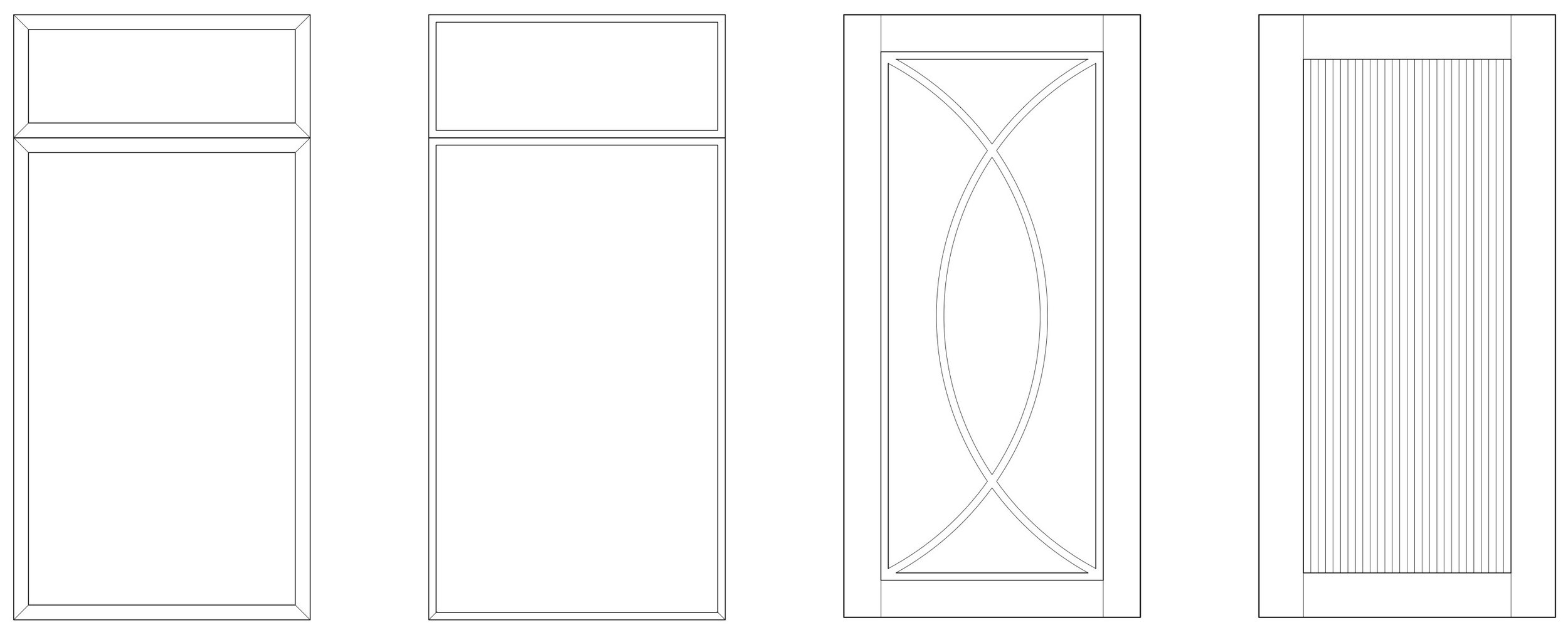CABINETS
Built-in cabinets are a key feature in any home. Along with the trim, they help set the stylistic tone of the entire house. It’s important, therefore, to think carefully about the right details to employ. A sense of warmth and harmony should be your goal.
FACE-FRAME VS. OVERLAY
There are three main categories of cabinet construction style: face-frame, partial overlay, and full overlay. Face-frame (aka, inset) is when the door and drawer faces are set into the front face of the cabinet, so that each one, or a group of them, are framed. This style allows for a range of expression—the frames can be plain or with some detail, like a beaded edge. They can be made wide or narrow in both the horizontal or vertical direction. Also, the hinges can either be concealed or expressed.
When the doors and drawer fronts sit over the frame, this is called overlay—this is a simpler mode of construction. Traditional and rustic styles often employ a partial overlay, where some of the frame is still visible and the outside edge of the fronts are given a tapered profile. Full overlay hides the frame altogether and provides a very streamlined look. Depending on the finish, this can come off as minimalist sheek or utilitarian. It’s also possible to combine the languages of both overlay and face-frame cabinets.
(1) partial overlay (2) full overlay (3) face-frame (inset)
FRONT STYLE
The other main cabinetry style decision regards the drawer and door fronts. There are two types: panel and slab. Panel-style doors offer the most variation. They are made with a frame around the edges which hold a panel in place. In its simplest form this is often called a shaker front. Detail can be added along the frame edges, including a simple rounded profile that steps down to the panel.
The panel, itself, can be plain and flat, profiled (like beadboard), or raised (usually in more formal traditional styles). Check out this blog post to understand typical panel moulding options. The panel can even be a different material, like grass cloth or glass (textured, coloured, or ribbed) with or without patterned muntin bars.
Unlike panel fronts, slabs have one continuous surface. Often they are used on small drawer fronts even when panel fronts are used elsewhere. Their outside edge can be profiled to add detail: as with the micro-shaker style, or ones that utilize a beaded edge. Completely flat panels have a utilitarian or very minimalist look. Using stained wood can help give these some life.
From left to right: shaker with square profile; shaker with quarter-round panel-mould; recessed beadboard panel; raised panel.
From left to right: micro-shaker; slab with beaded edge; glass panel with muntin pattern; ribbed-glass panel
THE FRILLS
Cabinets have other bits and pieces that also require attention. At the top, trim (often a cove or crown) can help transition to the ceiling or otherwise provide a resolved edge. In more minimal styles, a simple shadow reveal is used. At the bottom, the base can be left simple or given more detail, similar to baseboard trim. For cabinets with counters, the kick plate is typically pushed back to provide toe room, but this can be detailed decoratively. For the cooktop exhaust, sometimes this is integrated into a custom wood or metal hood. Other details like brackets and legs are employed where needed.
CONCLUSION
Don’t be afraid to embrace detail in your cabinets. Bare simplicity is hardly the most interesting thing to look at, and hopeful you’ll be enjoying your new cabinets for a long time.





